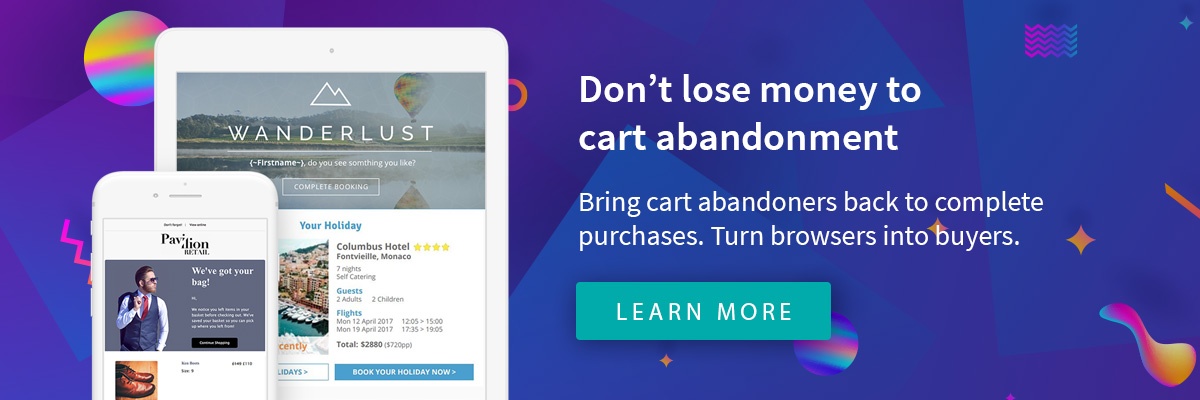Now in force, the noise around GDPR has started to die down. But many brands still have answered questions. Here at Pure360, we’re making it our mission to address these.
In this blog post, we answer a burning post-GDPR question we get asked often: are cart and browse abandonment emails GDPR compliant?
Read on to find out everything you need to know about cart and browse abandonment emails and GDPR.
What are cart abandonment emails?
Cart abandonment emails (also called basket abandonment emails) are automated emails that get sent if a shopper abandons their online cart before checking out.
A form of personalisation, cart abandonment emails contain the products a customer had in their basket when they abandoned checkout.
Sometimes brands offer a discount on these products. Or they may add a countdown timer letting customers know items will only be held for a limited time. This tactic creates urgency to buy.
The aim of cart abandonment emails is to entice the shopper back to your website to complete their purchase.
Cart abandonment emails and consent
If you have a customer’s consent to send them marketing communications by email, and your website privacy policy explains what types of emails they will receive by using the website and for what lawful purpose, sending them a cart abandonment email is not problematic.
Cart abandonment emails sent when you have consent are GDPR compliant. But what if you don’t have consent? Would your cart abandonment email still be GDPR compliant?
You’ll be pleased to hear that the short answer is yes! Let’s explore why.
Cart abandonment emails and legitimate interest
The general consensus in the marketing community is that cart abandonment emails sent without consent are GDPR compliant on the basis of legitimate interest.
When you collect the customer’s email during the course of a sale, you have a legitimate interest to contact them to help them complete their purchase.
Cart abandonment emails are considered a type of contact which supports customers to complete their purchase.
When a person puts items in their basket, this shows they have an interest in purchasing from you. If you already have their email, you can rely on legitimate interest to send a cart abandonment email.
On this basis, you do not need to have the customer’s consent to send a cart abandonment email.
However, your email must contain an unsubscribe link. This ensures the customer can opt out of receiving your cart abandonment emails should they choose.
Are browse abandonment emails GDPR compliant?
Browse abandonment emails are triggered when a customer who has been browsing your products abandons your website. Their aim is to tempt the customer back to browse (and hopefully buy).
Context is important when it comes to sending GDPR compliant browse abandonment emails.
If you have obtained your customer’s consent to send them marketing communications by email and your website privacy policy explains what types of emails they will receive by using the website and for what lawful purpose, sending browse abandonment emails is GDPR compliant.
If the customer has previously brought from you or entered a sales negotiation where you obtained their email, you could argue that you have a legitimate interest to send a browse abandonment email.
If you don’t have a legitimate interest, then you shouldn’t be sending them any type of marketing communications via email, including browse abandonment emails.
Takeaway
Cart and browse abandonment emails are a great way to entice customers to continue their journey with you. They help to increase conversions and drive up profits.
Under GDPR it is important to be sure that the triggered emails you send are compliant. When it comes to cart abandonment emails, you are on safe ground.
If you have consent, cart abandonment emails are GDPR compliant. Without consent, you may rely on legitimate interest.
Browse abandonment emails are trickier as it could be argued that a customer has not entered the sales process by simply browsing the website. The context of how you obtained a customer’s email is key with browse abandonment emails.

